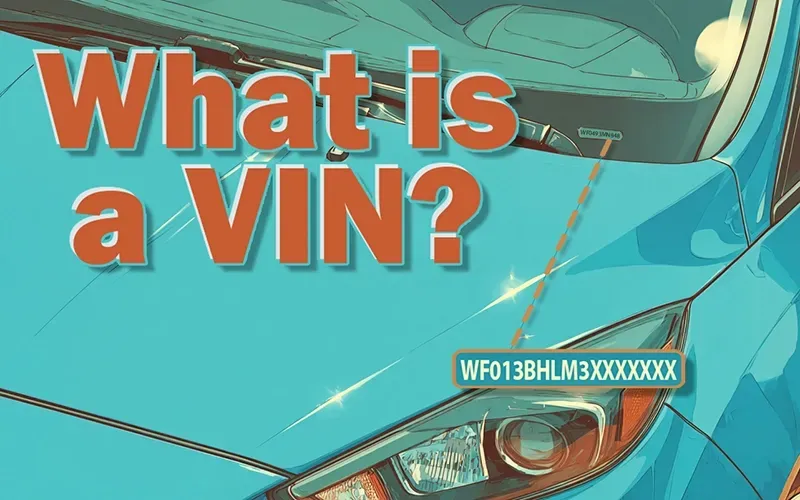What Is a Vehicle Identification Number (VIN)?
If you’re selling your car, you’ve probably been asked for your Vehicle Identification Number (VIN). But what exactly is it, and why does it matter?

A VIN is a unique 17-character code assigned to every vehicle. Think of it like your car’s fingerprint, no two vehicles share the same VIN. Introduced in Australia in 1989 to comply with international standards, the VIN remains with the car for life, unlike registration plates, which can change.
Where Can I Find My VIN?
You can find your car's VIN in several common locations:
- Windscreen: Look through the lower corner on the driver's side.
- Driver's Door Frame: The area visible when the door is open. This location or the passenger from door normally houses a vehicles build plate and compliance plates.
- Engine Bay: Typically etched onto the build plate or directly stamped into the metal chassis.
- Registration Documents: On your car's registration papers and insurance certificate.
Your owner's manual will also guide you to the exact location of the VIN.
What Do the Letters and Numbers in a VIN Mean?
Although it seems random, each character in your VIN reveals important information about your vehicle. Here's a simple breakdown:
1. World Manufacturer Identifier (WMI)
- The first three characters identify the car manufacturer and country of production.
- Example: A VIN starting with JF1 indicates a Subaru vehicle built in Japan.
2. Vehicle Description Section
- Characters four to eight provide details about the car model, body style, and engine type.
- The ninth character is a security digit used to verify authenticity.
3. Vehicle Identifier Section
- The tenth character indicates the car's model year.
- The eleventh character indicates the manufacturing plant.
- Characters twelve to seventeen provide a unique serial number for your specific vehicle.
Example of Decoding a VIN:
If you have a VIN like JF1ABCDEFYH123456, here's what it means:
- JF1: Subaru, manufactured in Japan
- ABCDE: Details about model and engine
- F: Security check digit
- Y: Model year (for example, Y might represent the year 2000)
- H: Factory location
- 123456: Production sequence number unique to your car
Why is the VIN Important When Selling Your Car?
Buyer Trust and Confidence
Potential buyers will often request the VIN to conduct a VIN check QLD. This check confirms whether the vehicle has any debt owing, has been stolen, or has previously been written off.
Buyers use Australia's official Personal Property Securities Register (PPSR) to verify this information easily. Providing your VIN helps create transparency and trust during the sale.
Registration and Ownership Transfer
Australian transport authorities use your VIN to accurately identify and register your vehicle. The VIN appears on registration transfer paperwork, ensuring everything matches correctly when selling or buying a car.
Repairs, Recalls, and Insurance
Your VIN helps ensure you're getting the correct parts for your vehicle. Manufacturers and dealers use the VIN to confirm parts compatibility and manage safety recalls. Additionally, your insurance provider uses the VIN to confirm your car's details for accurate coverage.
Easy Verification for Online Listings
When selling your car online, platforms often require the VIN to verify vehicle details, making it simpler for buyers to confirm it's model year, badge and series etc.
Quick Summary:
- Your VIN is a unique 17 character vehicle identifier.
- It reveals details about your car's origin, model, and production information.
- You can find your VIN on your car and official documents.
- Providing your VIN helps buyers verify the car's history and increases transparency.
Now, whenever you're asked for your VIN, you'll know exactly what it is, why it's important, and how it makes the car selling process smoother and safer.





